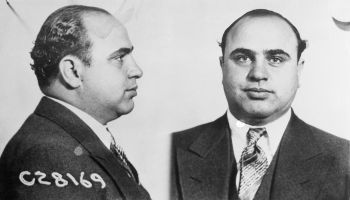SEPTEMBER IS ATRIAL FIBRILLATION AWARENESS MONTH AND TODAY IS PART 2 OF A SPECIAL GET WELL WEDNESDAY FEATURE WITH OUR MONTH-LONG RESIDENT HEALTH EXPERT DR. FREDA LEWIS-HALL WITH PFIZER.
FREDA LEWIS-HALL IS THE CHIEF PATIENT OFFICER AND EXECUTIVE VICE PRESIDENT AT PFIZER INC. DURING HER 35-YEAR CAREER IN MEDICINE, DR. LEWIS-HALL HAS BEEN ON THE FRONTLINES OF HEALTHCARE AS A CLINICIAN, RESEARCHER, AND LEADER IN THE BIOPHARMACEUTICALS AND LIFE SCIENCES INDUSTRIES. THE COMMON THREAD THROUGHOUT HAS BEEN HER PASSION TO ADVOCATE FOR HEALTH EQUITY AND IMPROVED OUTCOMES FOR ALL PATIENTS.
ATRIAL FIBRILLATION, OR AFIB, CAN DO MORE THAN MAKE YOUR HEART FLUTTER – IT CAN LEAD TO SERIOUS HEALTH CONSEQUENCES, INCLUDING STROKE.
Q: WHAT IS AFIB AND HOW MANY PEOPLE DOES IT AFFECT?
A: Atrial fibrillation (or AFib) is a common type of arrhythmia—a condition in which the heart beats too slowly, too fast, or in an irregular way. This irregular heart beat makes it hard to for the heart to pump enough oxygen-rich blood to the rest of the body.
- When the top chambers of the heart do not contract properly to pump blood into the lower chambers, the blood can start to pool and form clots. These clots can travel to the brain, blocking or limiting blood flow, and may result in a stroke, which can be debilitating.
- AFib may occur in episodes or be a permanent condition, and it’s projected to affect up to 8 million Americans in 2019.
- For people 65 and older, it’s important to understand what atrial fibrillation is, how it increases stroke risk, and the need to appropriately consult with their physicians.
Q: WHAT RISKS DOES AFIB POSE TO AFRICAN AMERICANS?
A: First: regardless of race, not enough people know about the dangers of AFib. Atrial Fibrillation is a significant risk factor for stroke, but it often goes undetected. ·In an analysis of ~3500 patients who developed AFib, results showed that compared to Caucasians with AFib, African Americans with the condition have a higher risk of stroke –both before and after their AFib diagnosis.
- In this same analysis, African Americans with a new diagnosis of AFib were 62% more likely to have had a stroke before AFib diagnosis than were Caucasians who developed AFib.
- In another analysis of ~12,000 patients, African Americans were found to be less likely to receive a blood thinner compared to Caucasian patients to help manage AFib.
Q: WHAT ARE SOME AFIB SIGNS AND SYMPTOMS TO WATCH OUT FOR?
A: Despite its well-established risks, AFib all too often flies under the radar. While some symptoms of AFib include heart flutters, pain in the chest, dizziness and shortness of breath, it’s possible that people’s AFib may come and go or there may be no symptoms at all.
- AFib can typically be detected during a routine primary-care checkup, by having a doctor do pulse palpation or use a stethoscope to listen to a patient’s heart, checking for the rhythm and regularity of their pulse. An EKG (which shows the heart’s electrical rhythm), may also be used to confirm AFib.
- In cases where a patient shows no symptoms, procedures such as blood tests, chest X-ray, stress tests, a Holter monitor to record the heart’s electrical activity, or an echocardiography (or echo) may nonetheless reveal the presence of AFib.
- As part of the Matter of Moments initiative, The Harris Poll on behalf of the Bristol-Myers Squibb-Pfizer Alliance conducted a survey of 1,010 U.S. adults aged 40 and older to assess understanding of AFib and stroke risk. Results from the survey suggest that: Many adults 40 and older (61%) are not familiar with AFib. On top of that, the survey suggested many undiagnosed adults aged 40 and older with one or more risk factors (89%) may not believe or aren’t sure they are at risk for AFib.11oAmong adults 65 and older, a group who is at a higher risk for AFib, 58% do not know their age puts them at an increased risk for AFib.
- If you think you have any of the symptoms of AFib, be sure to tell your healthcare provider.
- In addition to understanding AFib and its risk factors, it’s also important to talk with your healthcare provider about how to manage it. Many people live a normal, active life with AFib, but awareness and diagnosis play a key role in making that possible. And for some, treatments, including a blood thinner, may help reduce the risk of stroke.
Q: HOW CAN LISTENERS GET MORE INFORMATION?
A: To learn more, visit AMatterofMoments.com.
- Tunisia: Entertainment, Food, Languages, Places To Visit + More
- South Sudan: Entertainment, Food, Languages, Places To Visit + More
- Morocco: Entertainment, Food, Languages, Places To Visit + More
- Egypt: Entertainment, Food, Languages, Places To Visit + More
- Sudan: Entertainment, Food, Languages, Places To Visit + More
What You Need To Know About AFib was originally published on blackamericaweb.com















